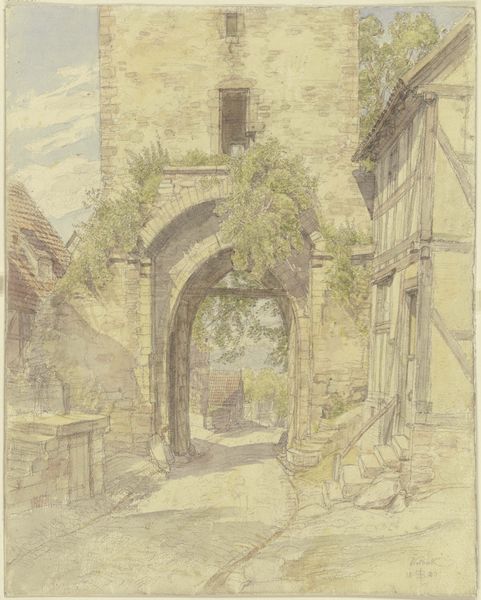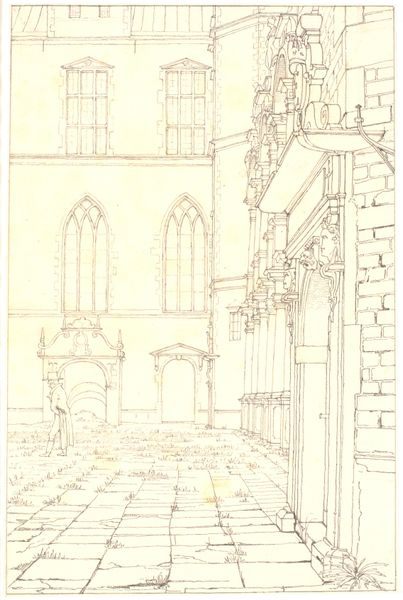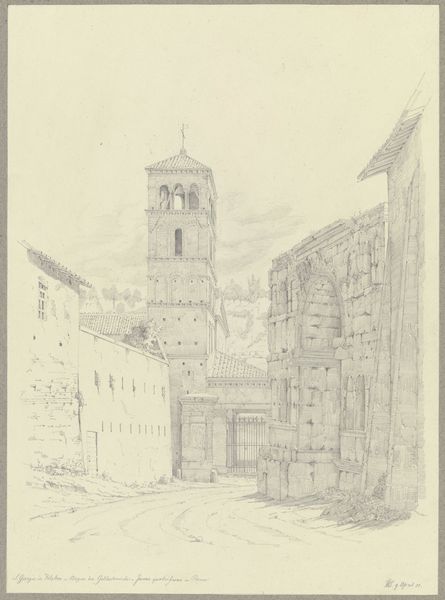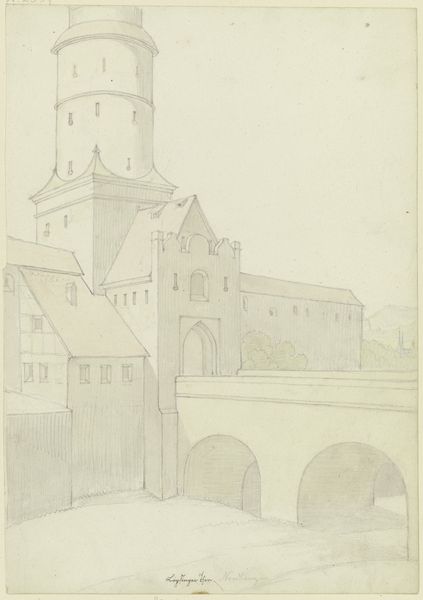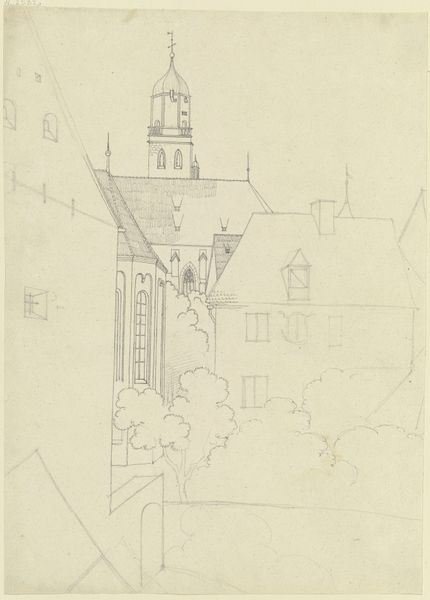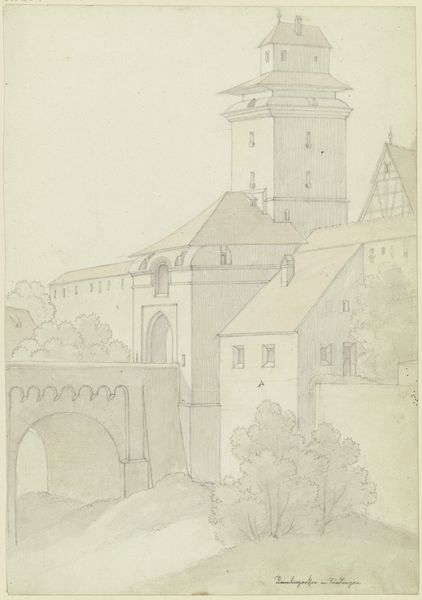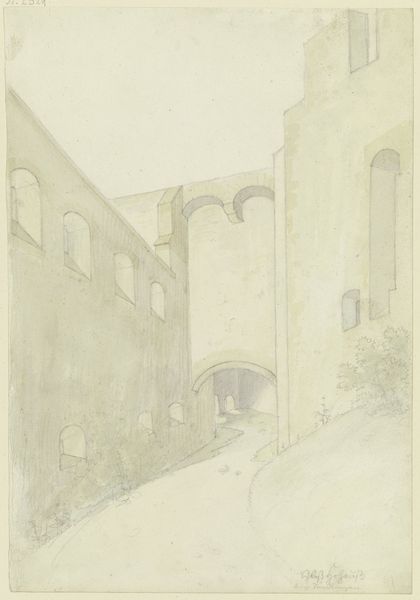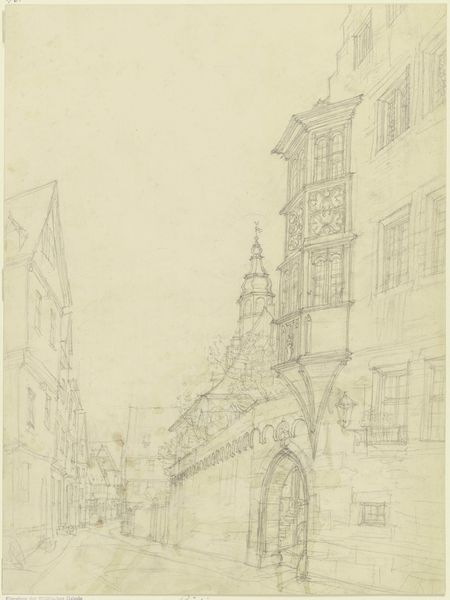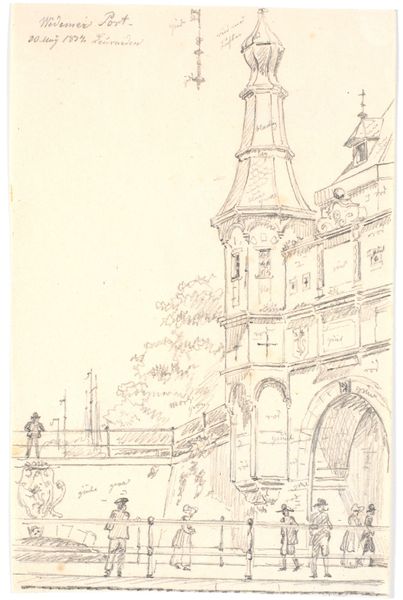
drawing, ink, pencil, architecture
#
drawing
#
landscape
#
etching
#
ink
#
pencil
#
architecture
#
realism
Copyright: Public Domain
Curator: Peter Becker’s “Die Werner-Kapelle in Oberwesel,” currently housed here at the Städel Museum, captures a moment frozen in time through ink, pencil, and drawing. It feels incredibly subdued, almost ghostly. What’s your immediate read? Editor: I find its ethereal quality quite striking; the subdued palette almost washes away the boundaries between the architectural forms. What's intriguing is how these pencil and ink mediums, traditionally associated with planning and precision, here create a scene of such dreamlike impermanence. Curator: Becker’s evident hand is fascinating—how he chose to reveal, or conceal, through layers of materiality to represent architectural planes. Notice, for instance, the cross-hatching in the shadows; it adds an atmospheric depth beyond a purely representational depiction of the site. Editor: Absolutely. The means of production are essential to decode what he is emphasizing here. Think about the sheer physicality of transcribing that intricate chapel roofline in pencil—it becomes an act of intimate observation, reflecting the skilled labor of hand production that a photograph could never convey. Curator: The use of negative space, too, feels deliberate. He's carefully guiding our eye, creating visual pathways into the architecture itself. Do you think it's significant he opted to render the stone as almost fragile through these fine lines? Editor: Yes, considering that materiality and labor are the foundations upon which architecture rests, its dematerialization here makes this rendering feel more like an idea of permanence than a factual record. Curator: Indeed, and this interplay is ultimately where I think Becker's work succeeds so beautifully. It marries objective reality with subjective perception, forcing us to reconsider our relationship to place, representation, and the subtle poetics of process. Editor: So it is: an exercise in revealing that which is normally concealed within a static, unchanging structure—human presence, process, and labor itself. Thanks for taking the time to reflect on the making of it, together.
Comments
No comments
Be the first to comment and join the conversation on the ultimate creative platform.

